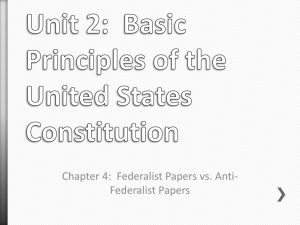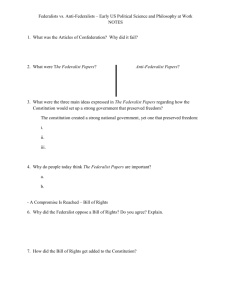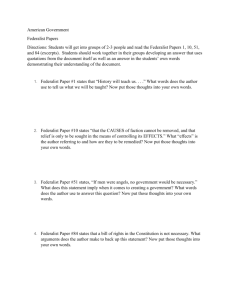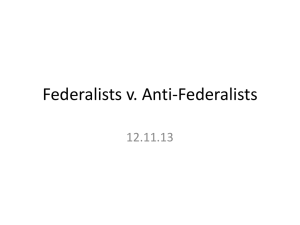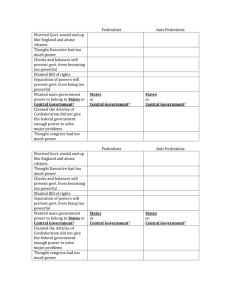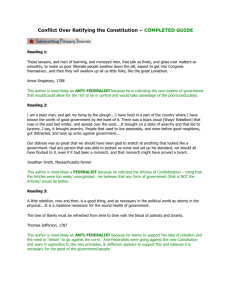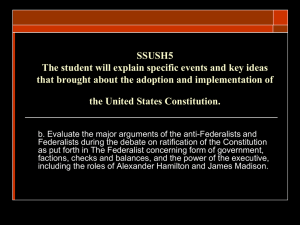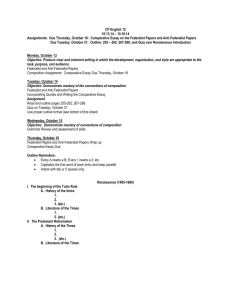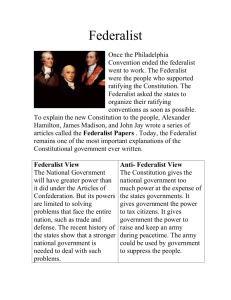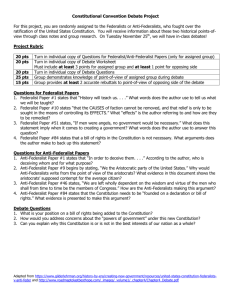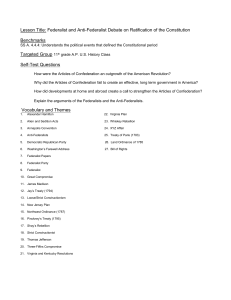Historical Document #4 Federalist and Anti Federalist Papers Power
advertisement
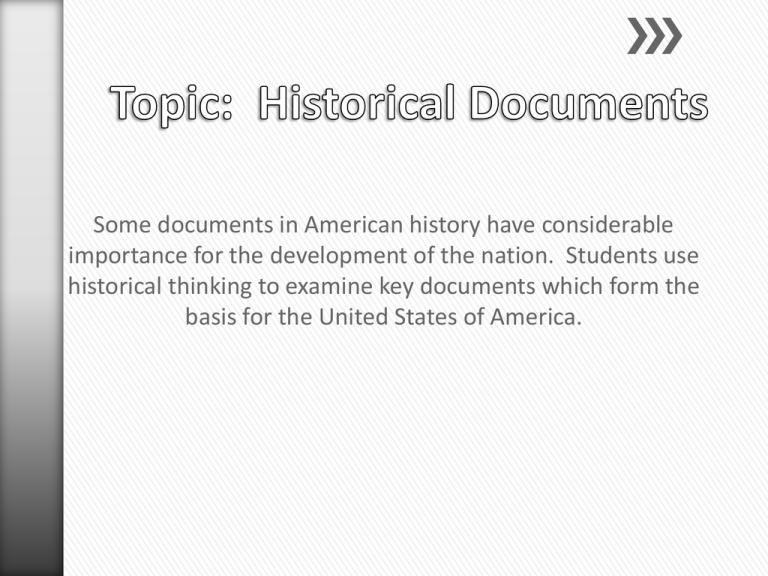
Some documents in American history have considerable importance for the development of the nation. Students use historical thinking to examine key documents which form the basis for the United States of America. Historical Document #4: Federalist and Anti-Federalist Papers Content Statement: The Federalist Papers and the Anti-Federalist Papers structured the national debate over the ratification of the Constitution of the United States. Expectations for learning: Compare the arguments of the Federalists and Anti-Federalists on a common topic related to the ratification of the Constitution of the United States and hypothesize why the winning argument was more persuasive. Content Elaborations: The Constitution of the United States represented a significant departure from the Articles of Confederation. The document required ratification by nine states for the national government to be established among the ratifying states. Proponents and opponents of the Constitution attempted to sway the deliberations of the ratifying conventions in the states. The proponents became known as Federalists and the opponents as Anti-Federalists. New York was a pivotal state in the ratification process and Federalists prepared a series of essays published in that state’s newspapers to convince New York to support the Constitution. These essays have become known as the Federalist Papers and they addressed issues such as the need for national taxation, the benefits of a strong national defense, the safeguards in the distribution of powers and the protection of citizen rights. What has become known as the Anti-Federalist Papers is a collection of essays from a variety of contributors. While not an organized effort as the Federalist Papers were, the Anti-Federalist Papers raised issues relating to the threats posed by national taxation, the use of a standing army, the amount of national power versus state power and the inadequate protection of the people’s rights. Independence Ordinance of the United States Anti-Federalist Papers WHO WHO WHO WHO WHO WHAT WHAT WHAT WHAT WHAT WHERE WHERE WHERE WHERE WHERE WHEN WHEN WHEN WHEN WHEN WHY WHY WHY WHY WHY I. Federalists A. For ratification of the Constitution B. Wanted a stronger federal government C. This would solve problems of the Articles of Confederation D. State power would have to give way to general welfare of the nation E. Federal power was defined and limited F. However, states would still hold some power II. Anti-Federalists A. Against ratification of the Constitution B. Believed the Constitution gave the federal government too much power C. Wanted more power reserved to the states D. Argued the “necessary and proper” and “supremacy” clauses gave the federal government too much power Federalists can be said to have won the overall debate on the basic principles of government with the ratification of the Constitution of the United States. AntiFederalists did achieve some success with the limitations on government embraced by the Bill of Rights. ***Both sides prepared essays to influence the debates at the Constitutional Convention. The essays were called the Federalist and Anti-Federalist Papers. Have students read excerpts from the Federalist Papers, No. 44, “Restrictions on the Authority of the Several States,” and No. 45, “The Alleged Danger from the Powers of the Union to the State Governments Considered” as well as excerpts from the Anti-Federalist Papers, “A Consolidated Government is Tyranny” and “Federalist Power Will Ultimately Subvert State Authority.” Conduct small-group discussions followed by a large-group discussion on the relative merits of the arguments set forth. Have students consider which side in this debate they support given present-day circumstances. Link to the Federalist Papers Link to translation of the Federalist Papers Link to Anti-Federalist Papers
